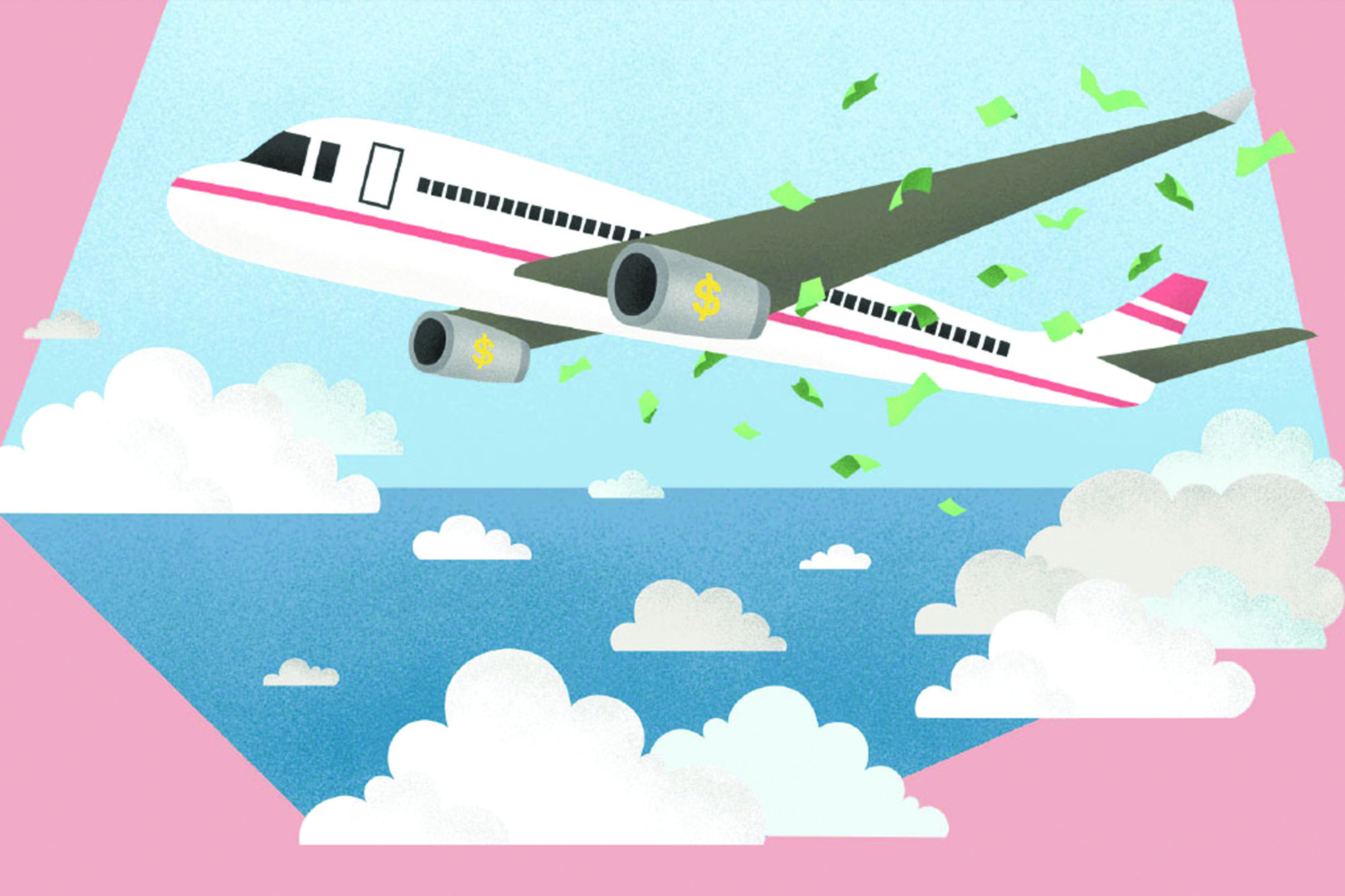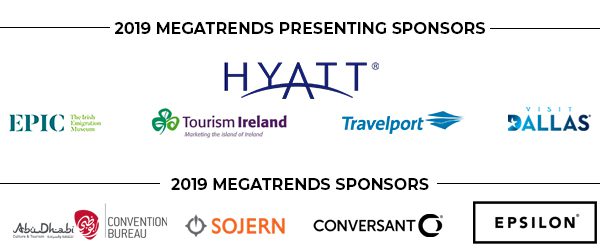Travel Megatrends 2019: Low-Cost Carriers Lose Some Luster

Skift Take
If you've been following the press, you may think low-cost carriers will take over the world, disrupting established airlines and delighting customers with cheap fares for decades to come.
Let's not get ahead of ourselves.
Yes, short-haul, low-cost airlines such as Ryanair and Southwest Airlines have proven they can make money providing service customers like, or at least tolerate. But long-haul, low-cost airlines only have figured out half the equation. Most know how to win customers, but not how to produce sustainable margins.
It shows, again, how rare it is for new entrants to disrupt the world’s airlines. Most of today’s most powerful airlines have been around for decades, and though some have been resistant to change, they have so much size and scale they can withstand challenges from disruptive competitors. You could argue the last airline to truly change how the industry operates was Southwest, which introduced the low-cost, short-haul model almost 50 years ago.
There is still hope, of course. But this year could be much different than the previous two, when airlines like Norwegian Air, Primera Air, and Wow Air capitalized on cheap fuel and sluggish competition to rapidly add markets and aircraft for transatlantic markets.
Get Your Skift Travel Megatrends 2019 Download Here
Skift wrote about the burgeoning low-cost, long-haul trend in a 2017 megatrend, asking whether these airlines would permanently change how people travel. But Primera went bust last October, and Wow Air is in a precarious place. As it hemorrhaged cash at year-end, Wow returned some aircraft to lessors, while waiting to see whether Frontier Airlines owner Indigo Partners would close on plans to invest in it. Indigo stepped in with an investment proposal after Icelandair walked away from a planned acquisition in November, saying the discount airline could not meet conditions.
Norwegian may be the last hope. It’s considerably larger than the others, with a more robust network, so it can better take advantage of scale. But amid fierce competition with legacy airlines, and higher fuel prices, Norwegian may have to adapt.
This year, it will probably try to raise prices as much as competitors permit. And it likely will continue to prune its network, culling poor performers, including flights between secondary cities in the United States and Europe (Hartford to Edinburgh, Scotland was a disaster), as well as ultra-long flights. London to Singapore, the longest low-cost-carrier flight in the world, disappeared in January.
“They couldn't make money when oil was at $40 a barrel,” Ryanair CEO Michael O’Leary said on an earnings call about Norwegian. With fuel now pricier, O'Leary said the airline might suffer further.
Problem With the Model
For insiders, it’s not hard to see the problem. Systemically, the low-cost model doesn’t work as well for longer flights as for shorter ones.
Take fuel. On a long journey, it accounts for much of an airline’s costs. While low-cost carriers usually have several advantages over legacy airlines, including lower labor costs and a more efficient workforce, every airline pays roughly the same price for fuel.
On Singapore to London, which can take 14 hours, Norwegian would have paid nearly the same price per liter as the competition — Singapore Airlines, British Airways, and Qantas. And while Norwegian was the only one of the group to fly the Boeing 787, which burns less fuel than most other widebody aircraft, it paid a premium to acquire its new technology aircraft, negating much of that savings.
Meanwhile, Norwegian was at a revenue disadvantage. Its competitors had four cabins — first, business, premium economy, and economy — allowing them to reach every market segment. Norwegian had just two, both economy products.
Passengers don’t tend to care much about premium seats on a one- or two-hour flight, so even a business traveler might defect to Ryanair or Southwest if the price or schedule is right. But on a six- to 14-hour flight, the calculation is different.
On longer flights, premium fares can be so profitable they subsidize the rest of the aircraft, allowing full-service carriers to match prices without materially hurting profitability. And now that many legacy airlines sell a no-frills product that roughly matches a discounter’s product attributes — U.S. airlines call it basic economy — they’re even better at price matching.
“If they are doing a great job in the front of bus making half their revenue on 15 percent of these seats, it will allow them to price their economy very aggressively,” Skúli Mogensen, Wow Air’s founder and CEO, said in an interview in September. “I have been impressed. The U.S. carriers at large have been far more aggressive in applying the low-cost model, segmenting the seat structure, understanding the passenger, adding ancillary revenue, adding technology.”
There are other issues with the long-haul, low-cost model.
Over the past four decades, low-cost, short-haul airlines have perfected how they turn airplanes, ensuring little ground time. But they lose much of that advantage when each plane flies just two segments a day.
“When a Southwest or a Ryanair plane is on the ground five, six, or maybe seven times a day, that quicker aircraft turnaround time — 10 or 15 minutes faster than a legacy competitor — that adds up to hours of additional flying during the day,” said Seth Kaplan, managing partner of Skift’s Airline Weekly newsletter.
Then there are different demand patterns. It is not unusual for low-cost, short-haul airlines to offer outrageous pricing, like nearly $0 fares, plus fees. Those fares can stimulate demand and persuade people to travel more than they otherwise might. But while $500 round trips between the United States and Europe are a good deal, they’re not the type of fares that can get people off the couch and onto a plane.
Not Going Away
While it’s tempting to pronounce the low-cost, long-haul model dead already, Norwegian Air CEO Bjorn Kjos often reminds analysts and travelers he’s not going away.
And he might be right. Though Norwegian Air ranked 74th on Airline Weekly’s list of the world’s 75 most profitable airlines between mid-2017 and mid-2018, the carrier performed reasonably well last summer, producing roughly $156 million in prof it between July and September.
Then again, most airlines can make money flying transatlantic routes in summer, when demand is robust. Winter is tougher, and O’Leary of Ryanair, which was No. 1 on that Airline Weekly list, has said he’s not sure Norwegian will survive.
“We expect more failures this winter,” O’Leary, a longtime rival of Kjos’, said in the fall. “Mostly, we think one of the two Scandinavian airlines.”
O’Leary has said similar things before, and Norwegian keeps chugging along. But if something goes wrong, Norwegian might choose a soft landing and sell the company. British Airways owner International Airlines Group, or IAG, expressed interest in Norwegian for much of last year, though the airline’s board has rebuffed it. Other full-service carriers could be interested, too.
Even if they disappear, low-cost transatlantic airlines have proven consumer behavior has changed. Once, legacy carriers assumed customers wanted a bundled experience for long-haul flights, with seat assignments, baggage, and food and drink included.
Now, they have gotten the message. Most sell unbundled fares, a trend that likely will continue, and some have created their own low-fare airlines that roughly mimic Norwegian. And while most are defensive enterprises meant to keep the parent company from losing share, some may keep flying no matter what happens with the competition.
Download Your Copy of Skift Travel Megatrends 2019





